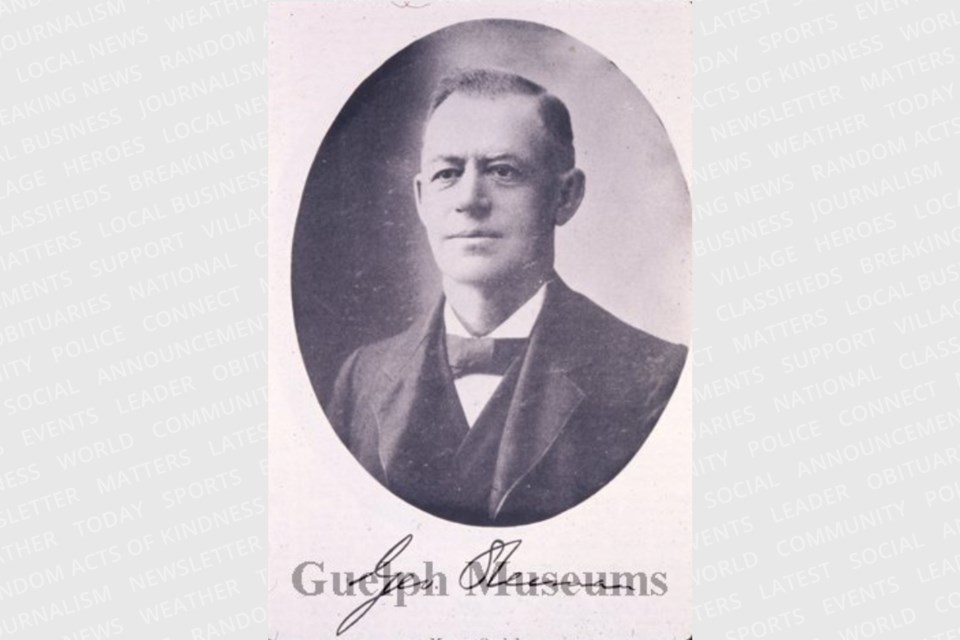Horse racing has been a popular sport in Canada since colonial times, and one of the most prestigious of all Canadian horse races is the Queen’s Plate (King’s Plate in years when the monarch is male). It was instituted by Queen Victoria in 1860 at the request of Sir Casimir Gzowski, president of the Toronto Turf Club, making it the oldest continuously run horse race in North America.
The prize was to be “a plate to the value of 50 sovereigns,” but is actually a gold cup.
The race is held annually at Woodbine Race Track in Toronto, but in the early years it was held in various communities in what is now Ontario. On July 5, 1864, on the decision of Governor General of Canada Viscount Monck, Guelph hosted the big event. Leading businessmen like George Sleeman had been instrumental in the Governor General’s choice of Guelph.
News of the “American War,” as the Civil War was then called in Canada, filled up the front pages of newspapers, but on July 8 coverage of the big race in Guelph had prominent space on the front page of the Weekly Mercury. There were actually three days of races sponsored by the Guelph Turf Club, but the main attraction, held on the first day, was the Queen’s Plate, which meant that “these races had an importance attached to them which, under ordinary circumstances, they would not have possessed.”
The town’s mile-long race course was at the former Newstead farm near Gray’s Inn on Eramosa Road, and had been improved for the occasion. The location was outside town limits. Horse races had once been held at Exhibition Park, where parts of the old track can still be seen as part of the perimeter road.
The judges’ stand and other spectator stands had been “strengthened and improved,” and a special stand for ladies had been erected. Serving as judges were magistrate A.J Ferguson Blair, Mayor W.H. Dickson and Richard Jackson, one of Guelph’s prominent citizens. Those men, along with Sleeman, were also senior members of the Turf Club. The Union Brass Band was there to play during the intervals between the races.
“Guelph was all alive,” the newspaper said. People had come from all over the province and the city’s hotels were full. Each train that arrived at the station disgorged a new throng of visitors. The streets were clogged with carriages, wagons, buggies, dog carts; and two-wheeled, hooded vehicles called shandrydans. It was a hot, dry day and the streets were not paved, so the traffic raised clouds of dust that covered riders and pedestrians. It was difficult, the Mercury said, to get “a mouthful of pure air.”
“The crowd on the race course and around the stands was motely enough,” the Mercury reported. The “fancy” class of society was well-represented. There were also “fast young men with white turbans” who wore “peg-tops” – trousers that had wide hips and narrow legs – and who spoke “the latest slang talk.”
“It was a grand mixture of characters,” the Mercury said, “beginning at the lowest strata with the black-leg, and mounting up by easy gradations towards the honest man … There was quite a sprinkling of the older sporting gents – veterans in horse racing – who only bet when they are sure to win, and know, or pretend to know, much more about the horses who are to run than anybody else.
“There were also a number of young ladies, who seemed to have doubts in their own mind whether it was right for them to be there or not; besides a scattering of old dowagers, who evidently felt that their presence there was sufficient to make the affair fashionable.”
Hooped skirts were the fashion of the day, and the newspaper observed that “hoops, with all the necessary adjuncts, of course” could pose a problem in the stands; how to ne “safely stowed without any danger of being crushed.”
The clergy often objected to horse racing because, in their opinion, it attracted “thoughtless and unprincipled persons” and encouraged drunkenness, gambling and swearing. On this occasion, the Mercury was happy to report “the entire absence of those gamblers who ply their arts on the roulette table, and make their money out of the "greenhorns" by other knavish devices. A few peep shows were on the ground, but they lacked customers. The drinking booths were well patronized. Attempts were made to get up a fight or two, but they were nipped in the bud.”
The Queen’s Plate was open to all horses bred in Upper Canada that had never previously won. There were twelve entries, two of which were Guelph horses: Desdam and Colleen Bawm. The race was run in three heats. The winner was a filly named Brunetta which belonged to Dr. George D. Morton.
The crowds weren’t quite as large for the second and third days, but the races were still well-attended. There was a dramatic moment in the second-last race, a two-mile run that included eight hurdles. A horse named Ruble bolted at the gate, crashed into a carriage and injured several other horses. Another horse, Brown Dick, ridden by an inexperienced jockey, fell while taking the final hurdle and completely rolled over on his rider. Fortunately, horse and rider were uninjured.
Guelph’s only hosting of the Queen’s Plate was considered a Royal City success.



